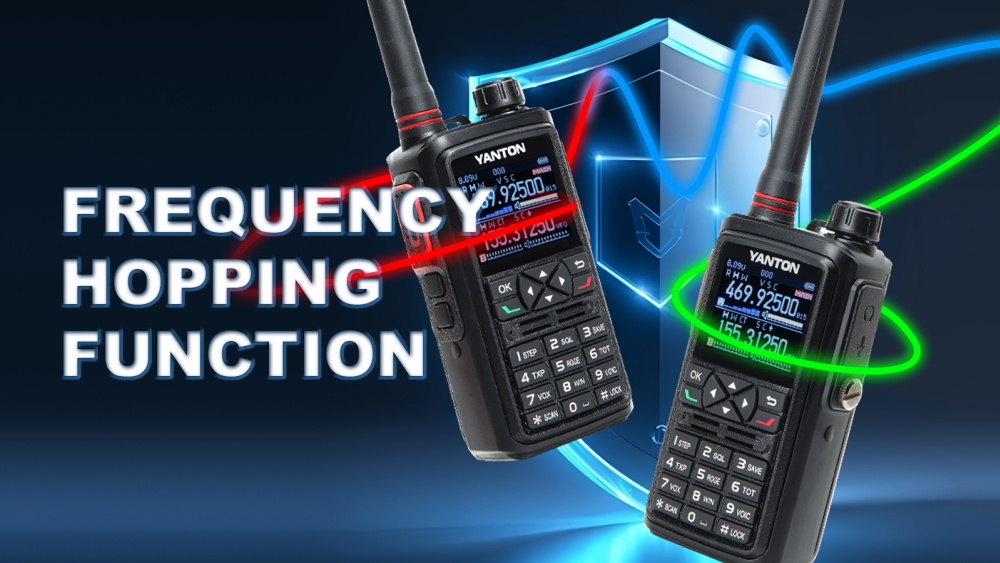
Salto de frecuencia en walkie-talkie

El salto de frecuencia de walkie-talkie es una tecnología avanzada de comunicación por radio en la que el transmisor y el receptor cambian rápidamente entre múltiples frecuencias durante una conversación, siguiendo un patrón sincronizado predefinido.
Cómo funciona:
Secuencia sincronizada:
yo Ambos walkie-talkies comparten una secuencia de salto idéntica (una lista de frecuencias en un orden específico).
yo Sincronizan la sincronización (por ejemplo, a través de una señal digital o un canal preestablecido) para cambiar frecuencias simultáneamente.
Cambio rápido:
yo Las frecuencias cambian varias veces por segundo (por ejemplo, 50–1000 saltos/segundo).
yo Cada frecuencia transmite sólo un pequeño fragmento de audio/datos antes de saltar.
Transmisión de datos:
yo La voz/datos se dividen en paquetes.
yo Cada paquete se envía en una frecuencia diferente en la secuencia.
Beneficio Explicación
|
Beneficio |
Explicación |
|
Anti-interferencia |
Si una frecuencia se bloquea por ruido (por ejemplo, maquinaria u otras radios), solo se pierde un microsegundo de audio. El siguiente salto evita el problema. |
|
Anti-espionaje |
Los espías sólo oyen ruidos fragmentados a menos que conozcan la secuencia y el momento exactos. |
|
Eficiencia del espectro |
Varios grupos pueden compartir la misma banda de frecuencia amplia sin colisionar (si sus secuencias de saltos difieren). |
|
Estabilidad de la señal |
Reduce los "puntos muertos" causados por reflexiones de radio (desvanecimiento por trayectos múltiples) en áreas urbanas/interiores. |
Ejemplos del mundo real
Obras de construcción: Decenas de equipos utilizan walkie-talkies sin interferencias, incluso en entornos con gran cantidad de acero.
Seguridad de eventos: Comunicaciones confiables en áreas concurridas (por ejemplo, conciertos) a pesar de la interferencia de Wi-Fi/celular.
Militar/Policía: Protege las comunicaciones sensibles contra interferencias o interceptaciones.
© Derechos de autor: 2025 QUANZHOU YANTON ELECTRONICS CO., LTD. Reservados todos los derechos.

IPv6 network supported